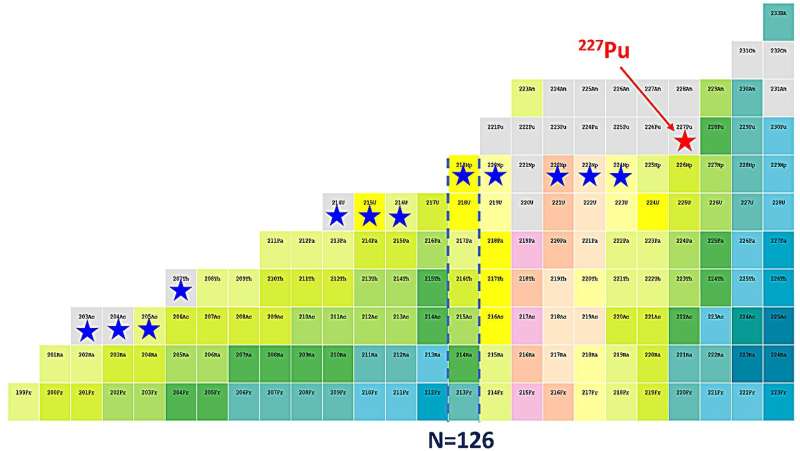Researchers at the Institute of Modern Physics in China have made a remarkable discovery, synthesizing a new plutonium isotope called plutonium-227. This development sheds light on the intriguing behavior of the elusive transuranium region, where the robustness of the neutron shell closure 126 has remained a mystery. The study, published in Physical Review C, opens up new avenues for understanding the complex nuclear structure of these heavy elements.

Unlocking the Secrets of Plutonium Isotopes
The discovery of plutonium-227 by a research team led by the Institute of Modern Physics (IMP) of the Chinese Academy of Sciences (CAS) marks a significant milestone in the ongoing exploration of the transuranium region. These heavy elements, which lie beyond the naturally occurring actinides, have long captivated scientists due to their complex nuclear structures and the intriguing behavior of their shell closures.
The research team focused on investigating the robustness of the neutron shell closure at the magic number 126, which has shown a persistent weakening in the uranium region. By synthesizing plutonium-227, a highly neutron-deficient isotope, the researchers aimed to gain a deeper understanding of the shell evolution in plutonium and shed light on the elusive transuranium region.
Pushing the Boundaries of Nuclear Exploration
To achieve this groundbreaking discovery, the researchers utilized the gas-filled recoil separator, Spectrometer for Heavy Atoms and Nuclear Structure, at the Heavy Ion Research Facility in Lanzhou (HIRFL) in China. Through a fusion evaporation reaction, they successfully synthesized plutonium-227 for the first time, making it the 39th new isotope discovered by IMP and the first plutonium isotope discovered by Chinese scientists.
The researchers carefully measured the alpha-particle energy and half-life of plutonium-227, finding them to be around 8191 keV and 0.78 seconds, respectively. These values fit well into the existing systematics of known plutonium isotopes, providing valuable insights into the nuclear structure of this elusive element.
Exploring the Limits of Plutonium Isotopes
The discovery of plutonium-227 is just the beginning of a more extensive investigation into the plutonium isotope landscape. The research team plans to explore even lighter plutonium isotopes, including plutonium-221 to plutonium-226, in an effort to gain a deeper understanding of the shell closure in this region.
By pushing the boundaries of nuclear exploration, the researchers hope to uncover the robustness of the neutron shell closure 126 in plutonium isotopes. This knowledge could have far-reaching implications for our understanding of the complex nuclear structure of heavy elements, ultimately contributing to the advancement of nuclear science and technology.
